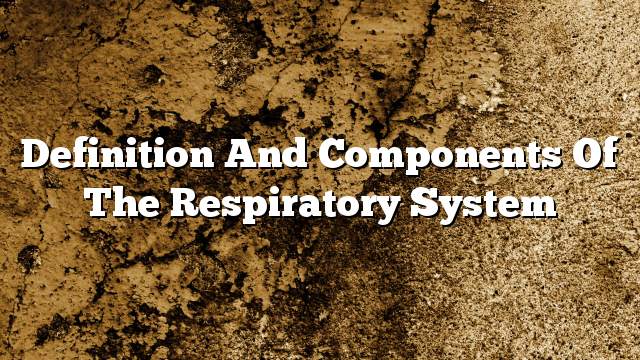Respiratory system
The respiratory system is one of the main organs of the body that plays an important role in maintaining the permanence of the work of the body. The respiratory system transmits oxygen to the lungs and then to the rest of the body. It also transfers carbon dioxide from different parts of the body to the lungs and then to the lungs. Outside the body, the respiratory system consists of a group of organs that join together to maintain the functioning of the organ in a complete and orderly manner.
Respiratory components
Rib cage
The rib cage consists of a group of ribs that take the shape of the cage and hence its name. These 24 ribs are arranged in a specific way to perform their function well, which is to protect the components and parts of the respiratory system from external influences, such as blows, shocks and bruises.
the nose
The nose is a member of the smell in the human body, it is in the form of bone protrusions, which extends through the cartilage of the nose, located in the front of the nose two openings called renegade or ventral openings, through which inhalation of the air, and connect the nose pharynx, and the inner layer lining the nose is a group of cells And a large number of capillaries and hair, and adjusts the nose air temperature, which enters the lungs according to the temperature of the body, and it purifies this air from dust, dirt and suspended things through the mucus and hair.
Pharynx
The pharynx is a common organ between the respiratory system and the gastrointestinal tract, because food and air travel through it. It is a muscle tube approximately 12 cm long. There is a small cartilage above the larynx called the “tongue of the muezzar.” When air is separated from food, This cartilage closes the trachea so that no food or water enters it. The person chokes, but when the air enters, the cartilage remains open, allowing the air to pass through the trachea and then into the lungs.
throat
The larynx is a cartilage box located at the top of the neck on the right side of the body. It is responsible for making sounds when speaking. It contains vocal cords. When a person tries to speak, the air comes out of his lungs, passes through the throat and hits the vocal cords, causing vibration. the sound.
Trachea
The trachea is 16-20 cartilages arranged on top of each other in the shape of a cylindrical tube 12 cm long and approximately 2 cm wide. Each cartilage takes the shape of U. When this trachea reaches the lungs, it branches into two rods and each shaft enters the lungs.
